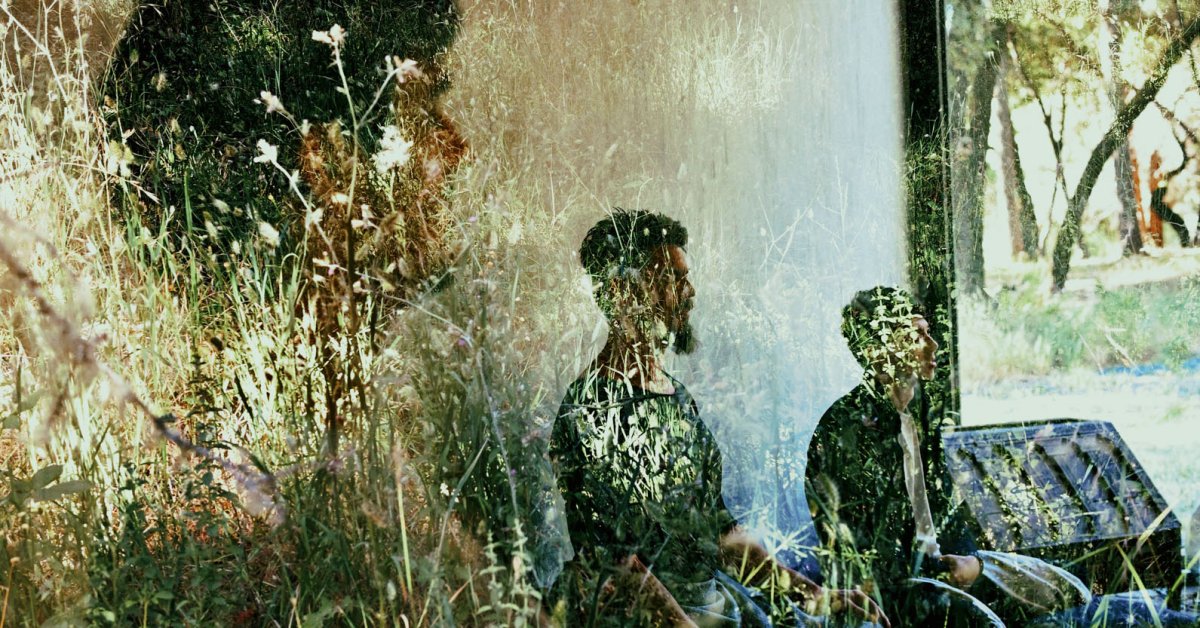
Nick Cammarata has always been unusually happy. The 31-year-old AI safety researcher had a good childhood, but it wasn’t just that; situations that made others depressed seemed to roll off him. “I think I was probably happier than 99% of people. It’s just kind of unfair luck,” he says. “I figured maybe what I had was as good as it gets.”
Then, in 2021, as part of an effort to investigate whether life could get even better, Cammarata discovered the jhanas. These eight advanced meditative states, characterized by deep concentration and blissful absorption, have been practiced for thousands of years but were long considered the domain of mystics and monks with decades of training. Cammarata, however, taught himself to enter these states after around 1,000 hours of solo meditation practice. “I was shocked that it was possible to get this thing you turn on in 10 seconds and just get joy for five hours straight,” he says. “Nobody talks about it.”
[time-brightcove not-tgx=”true”]So he started to. In the past few decades, a handful of American Buddhist teachers had published books and led retreats on the jhanas, but knowledge hadn’t spread much beyond meditation circles. Cammarata’s enthusiastic tweets about the jhanas got the attention of many in the Bay Area, fueling a growing interest in the ancient practices. Now neuroscientists are researching these altered states of consciousness, more meditation teachers are guiding people into them, and a much hyped startup called Jhourney—where Cammarata is a minor investor—claims most of its participants can reach them in under 40 hours of meditation.
The mainstreaming of the jhanas may represent the next frontier of the mindfulness movement, which has taken hold in American schools, hospitals, and workplaces and, propelled by apps like Calm and Headspace, become a billion-dollar industry. Mindfulness has been shown to minimize stress, improve focus, and help with pain management. It’s perhaps no coincidence that this surge in interest comes as mental-health issues are soaring globally, and as the U.S.—the richest country in the world—has dropped out of the top 20 nations for happiness, largely because of a decline among under 30s. Dr. Matthew Sacchet, director of the Meditation Research Program at Harvard Medical School and Massachusetts General Hospital, believes the destabilization of the pandemic, as well as other global challenges, has contributed to a “crisis of meaning” that makes advanced meditation increasingly appealing.
Read More: The Mindful Revolution
Stephen Zerfas, the 32-year-old CEO and co-founder of Jhourney, describes the startup as a well-being moon shot. “There’s hundreds of millions of people that have experienced meditation, and for them, it’s largely incremental,” he tells me at the Alembic, a meditation center in Berkeley, Calif., in early May. “Far less than 1% of them talk about it as absolutely transformative.”
Many in Silicon Valley see the jhanas as offering a tantalizing promise: a way to reprogram one’s internal software to access bliss on demand. It’s an idea in keeping with the Bay Area’s history as a playground for those chasing both peak performance and peak experience. If done responsibly, the upside could be enormous. Most of us tend to outsource our happiness to external sources—imagining that if we could just get rid of one thing bothering us or obtain another thing we want, we’d finally be happy. Jonas Mago, a cognitive neuroscientist studying the jhanas at McGill University, argues that this mindset overlooks our innate capabilities: “We don’t recognize that we have the profound power of shifting our own states by doing introspective work.”

Now, a new industry around the jhanas is taking shape—one that must navigate thorny tensions between spirituality and market forces. Jhourney’s approach isn’t without controversy. Some critics question whether the company has the expertise to guide retreats safely; others worry about repackaging rich practices as self-help techniques. “Jhourney is saying they’re not Buddhists and yet they’re using a Buddhist term,” says Tina Rasmussen, an American meditation teacher. “And that’s because it sells. If they’re really trying to help people, why are they charging so much?”
On a cool evening in May, I join 42 others in a conference room at the Applegate Jesuit Retreat Center in the foothills of the Sierra Nevada. As the room falls silent, five members of the Jhourney team—all young white guys—begin recounting how they went from viewing meditation as a chore to discovering real joy through the practice. As with others here, my own history with meditation is inconsistent at best. As a child with bad eczema, I sometimes used a jaap mala (a loop of prayer beads) to distract myself from the urge to scratch, inspired by my Hindu grandfather who meditated for an hour before dawn each day. But as an adult, my attempts to meditate usually devolved into rumination, leaving me feeling worse. I’ve come here with the same goal as everyone else: to learn how to tap into mind-blowing states of joy—in under a week.
In 2018, reeling from simultaneous breakups with a co-founder and a girlfriend, Zerfas signed up for a 10-day silent meditation retreat. “I quickly learned things could get worse,” he tells the room at Applegate with a grim laugh. After eight days of migraines, he changed techniques and stumbled into the most euphoric experience he’d had in a year. “If this was replicable,” he recalls thinking, “this changes everything.”
For the next year, he meditated daily and tried to hack his way back into that state. It wasn’t until 2021 that he came across Right Concentration, a jhana instruction book by American meditation teacher Leigh Brasington, and found a framework that seemed to explain his experiences.
Though they are most comprehensively delineated in the Theravada Buddhism school of Southeast Asia, the jhanas predate the Buddha and find parallels across contemplative traditions, from Carmelite nuns to Sufi mystics. According to the suttas (core Buddhist scriptures), the Buddha spontaneously entered the first jhana as a child some 2,500 years ago and later gave precise instructions on how to cultivate these progressively more profound states as part of the path to enlightenment. But over time, the jhanas largely fell out of common practice. And even as Western Buddhist teachers have worked to make them more accessible, mastering jhana still took significant time and dedication. “When I first heard about jhana, the assumption I had was that 30 people in the world could do this and maybe I’d be able to do it in my 80s if I practiced really hard,” says Kathryn Devaney, a neuroscientist, founder of the Alembic, and an adviser to Jhourney.
The goal of dramatically reducing the effort needed to access these states motivated Zerfas to quit his software-engineering job at Lyft in 2021 and co-found Jhourney the following year with Alex Gruver, then a management consultant. “It was an insane thing to do,” Zerfas says, “to try to replicate this thing that’s supposedly been around for a few millennia that nobody has heard of and then try to teach other people.”
The company initially focused on developing neurotech, like a consumer headset, to guide people into jhanas, raising $750,000 in pre-seed funding. Last fall, however, Zerfas and Gruver pivoted to retreats, soliciting feedback from around a dozen Buddhist teachers as they developed their approach. They see themselves not as spiritual leaders teaching the Buddhist dharma, but as “engineers” focused on sharing practical guidance as efficiently as possible. Since October, Jhourney has guided over 400 people through 16 retreats, and claims that more than two-thirds of participants enter jhana regardless of meditation experience. The online retreats cost $1,100 and in-person ones start at $1,800, though a higher-end offering in June cost upward of $5,000. (Scholarships are available.) The hope is that within a few years, Jhourney could be teaching tens of thousands of people the jhanas each year. “To reach millions, tech intervention will be necessary,” Zerfas says.
Read More: How Meditation Went Mainstream
For inspiration, he looks to the mindfulness movement, which has effectively secularized and scaled meditation techniques through apps and corporate programs. Traditional jhana instruction, which involves intimate teacher-student relationships and intensive retreats, may be harder to mainstream, but Jhourney wants to promote a bold idea: that interventions can do more than bring those suffering up to a healthy baseline—they can also catapult the ostensibly well-adjusted into unprecedented levels of thriving. Zerfas compares jhana to an inverted panic attack: instead of anxiety spiraling, positive emotions accentuate one another, leading to intense states of bliss and peace. “If you taught people how to navigate these positive-feedback loops in their own system, it would be almost as valuable as reading and writing,” he argues. “We teach those skills in second grade, so why wouldn’t we teach this?”

At my retreat, Burning Man stickers decorate water bottles and conversations touch on Wim Hof ice baths and psychedelic therapy. Most of the 43 people here—I’m one of only six women—are young, affluent tech workers from the founders’ networks or who hang out on “meditation Twitter,” which skews heavily male. We’re told that Jhourney has taken as many lessons from coding boot camps as it has from meditation retreats. Key messages include work smart, not hard; run your own experiments; keep iterating. At first glance, this crowd seems more focused on Silicon Valley-style optimization than traditional spiritual pursuits.
But during a welcome ceremony in the chapel on our first morning, people open up about what brought them here: redefining their relationship to pleasure; showing up for loved ones; navigating a breakup or career transition. Some confess they were hesitant to tell others about their plans, aware that the idea of seeking altered states might seem esoteric or self-indulgent.
I’ve been telling people I’m here “on assignment,” but I quickly realize if I want to access the jhanas, trying to stay detached and analytical isn’t going to work. As I sip a cup of cacao, a giant white Jesus Christ on a crucifix looming above, another word comes to mind: healing.
I’m reluctant to admit this, even to myself. While I’m not typically prone to anxiety or depression, the period before the retreat was among the hardest of my life. In the span of 10 months, I’d been diagnosed with severe endometriosis as well as a rare genetic form of diabetes; then, the simple act of tying my shoe led to agony and emergency spinal surgery for a rare condition that could have caused permanent paralysis if not treated quickly enough. For months afterward, I couldn’t exercise, or sit or stand for longer than 30 minutes without discomfort; I’d lost sensation on my left side from the hip down, and no one could tell me if, let alone when, it might fully return. My relationship with my body had become defined almost entirely by pain and frustration.
Motion is lotion is what I was told repeatedly during rehab, as movement helps nerves regenerate and signals your body to heal. I took that advice to heart, keeping busy with travel, working long hours, and socializing. People kept congratulating me on how well I was doing. Inside, I felt nothing like my old self.
Advised by my physiotherapist to meditate, I started doing app-guided breathing exercises and reading about meditation online. Critics warn that Jhourney risks reducing a profound contemplative path to a quick fix. Truthfully, that’s what appealed when I first emailed Gruver and Zerfas asking if I could attend a retreat and write about it. I’d already lost countless hours to medical appointments, hospital stays, and simply being in pain. I wanted to feel better, and soon.
At the start of the retreat, I hand in my phone, unplugging from email and the news cycle for the first time in a decade. My days begin with lakeside walks in the morning mist, followed by ecstatic dance at 6:45 a.m. and yoga at 11 a.m. Group meditation sessions bookend each day. Most days I meditate for six to eight hours, lying on a sofa or under the trees listening to birdsong.
But meditation, I discover, isn’t inherently relaxing. Humans aren’t designed to be still; meditation involves rewiring evolutionary instincts to seek pleasure and avoid pain. A retreat forces you to confront your psychology, Devaney says: “It’s really gnarly work—not a day at the spa.”
The first morning, we’re tasked with recalling positive memories as a way to spark the joy that might eventually lead to jhana. Instead, virtually every time I shut my eyes, I’m met with intense flashbacks from my year of medical crises. That evening, when someone mentions falling asleep during meditation, I’m shocked.
But the meditation works more quickly than I expected. Within a day, the flashbacks have faded and I find myself regularly drifting off. Over time, I stop policing my mind, no longer berating myself if I get distracted; if my inner critic pops up, I visualize putting her in a hammock to lie down. I become more alert to what I enjoy: one morning, during dance, I realize I am no longer having fun, and rather than forcing myself to stay out of some misplaced sense of obligation, I simply leave.
Still, cultivating positive emotions is harder than I anticipated. I find my typical British stoicism, while useful in a crisis, has inadvertently muted my capacity for joy. When I recite mantras like May I be happy, an internal voice questions my right to happiness in a world full of suffering. The idea of unearned joy feels almost transgressive, undermining everything I’ve learned about needing to work hard and accomplish things in order to be happy.
A turning point comes halfway through the retreat, during a forgiveness meditation. Tears flow as I realize how much anger I’ve been harboring—toward doctors who’d dismissed my symptoms, myself for not seeking help sooner, people in my life who couldn’t see my suffering. As I walk by the lake afterward, listening to birds chirping and frogs croaking, I feel the anger flow through me, white and hot and cleansing.

Soon, I find myself more attuned to my body, able to examine whether an emotion feels open (like joy) or closed (like frustration). We are advised to take cold showers and taste hot sauce, to notice when we are bracing against experience rather than surrendering to it. Gradually, I feel the tingles that apparently signal the start of the jhanas, the kind of thing I once might have dismissed as pins and needles. (Piti is the term Buddhists use; I think of it as a bubbly golden liquid, like champagne.) But I keep running into unexpected resistance, and the doorway to the jhanas shuts.
Of course, I’m not alone in my struggles. “There was an aspect of the Jhourney retreat that felt like you were a Pokémon and they were trying to get you to evolve jhana levels as quickly as possible in a week,” one participant tells me. That strikes a chord: as the days pass, I increasingly feel the pressure of being surrounded by goal-oriented people who are succeeding where I am not.
Succeeding at what, exactly? One of the challenges with the jhanas is that as with falling in love, ordinary speech doesn’t seem to do them justice. Analogies abound: getting goose bumps while listening to music; cuddling with a partner after sex; the satisfaction of completing a major project. The initial jhanas, characterized by high-energy experiences, seem to vary dramatically. One Jhourney participant likens the first jhana to the jolt of putting your tongue onto a battery, while another describes a floating sensation so intense that she wondered if her water had been laced with MDMA. There’s more consensus about the fourth jhana, however, which seems to be characterized by a deep peace and equanimity, a stark contrast to the internal dissonance most of us are used to in everyday life—thinking about emails while talking to a loved one or worrying about a past conversation while trying to enjoy a party. The fourth jhana, Devaney says, “feels like every atom in your body has had a nice meal, a good glass of water, and is sitting back in its armchair after dinner. It’s very profoundly like your whole system is on the same page.”
Read More: How to Be Mindful if You Hate Meditating
This unified state of mind can be a powerful tool for introspection and insight. Many Buddhists see the jhanas as preparation for deeper meditation leading to awakening, not as ends in themselves. “Jhanas offer a systematic training in letting go,” says Shaila Catherine, author of Focused and Fearless. “A mark of genuine mastery of jhana is dispassion toward pleasure, not seeking it on demand.” But some believe that even for those without loftier spiritual goals, the jhanas can be valuable—helping people “move their emotional set point a little more towards the happy scale,” as Brasington puts it.
There are also intense debates about what “counts.” Some teachers, like Catherine, say that jhana requires you to remain completely absorbed for long stretches without a single thought arising. Rasmussen, who co-authored Practicing the Jhanas, believes Jhourney is teaching pleasurable states that fall short of true jhana, which she compares to steam powerful enough to drive a locomotive. “If people think it’s steam when it’s water,” she says, “that is false advertising.”
This is hardly new: for almost as long as people have been practicing the jhanas, they’ve been arguing over how to define them. Brasington says the disagreement stems partly from varying interpretations of ancient texts and partly from the fact people are inclined to believe their way is the right way. “Spiritual teachers, unless they’re really advanced, are just plain old human beings,” he says.
While some teachers see “lighter” versions of the jhanas as more practical for modern lives, concerns persist about diluting the term. Jhourney stands by its use of jhana, emphasizing that it’s transparent about traditional definitions and helps connect participants with resources and teachers if they want to pursue further practice. “We’re just helping people experience more joy when they meditate,” Gruver says. “That seems like such an unambiguously good thing to me.”
Read More: Can Meditation Improve Your Health? Here’s What to Know
Rui Bao, who works in public education, compares her experience during a February retreat to six to eight months of therapy progress, saying it felt as though she were “sitting in a circle holding hands and singing kumbaya with all the different parts of myself.” Jake Eaton, a magazine editor, describes a cathartic experience in which he grieved for the turbulence of his childhood while feeling gratitude for the progress he’s made since. Even people who don’t reach jhana can find therapeutic effects, like one man who cried for the first time in 30 years during his Jhourney retreat.
And for some, the benefits can be lasting. Startup founder Ruby Yu says since her retreat last fall, her self-critical voice has quietened, she can’t remember the last time she got angry, and she’s much more familiar with joy. “That baseline of unpleasantness is much, much lighter,” says Yu, who is now working with Rasmussen to deepen her practice. “Whether or not it’s what the Buddha was truly talking about in the suttas, I don’t care. All I care is that it made meditation a lot easier for me.”
While it’s tempting to think that science will be able to resolve these centuries-old debates, neuroscientists say it’s difficult to define exactly at what point something is or isn’t a jhana. “What we know is that the mind has the capacity to get deeply absorbed by certain experiences,” says Mago, the McGill neuroscientist. “What’s right or wrong in the end is defined by what helps people.”

Richard J. Davidson, founder and director of the Center for Healthy Minds at the University of Wisconsin–Madison, notes that even modest amounts of meditation—under 10 hours of practice in beginners—can change brain plasticity. But he cautions against commercializing the jhanas prematurely. “People saying this benefits them is all well and good, but without real scientific evidence, we have no idea,” he says. “Anyone trying to monetize this should raise red flags.”
Read More: How 5 Minutes of Daily Meditation Enhanced My Life
Neuroscientists are increasingly trying to understand how the jhanas might affect the brain. A January study out of Harvard and Mass General found that the jhanas are related to distinct patterns of neural activity across various parts of the brain that correspond with experiential aspects including attention, joy, and equanimity. Preliminary research by Mago and Michael Lifshitz, an assistant professor of psychiatry at McGill, showed that during deep jhana meditation, patterns of communication in the brain became more flexible and unpredictable and practitioners showed increased cognitive diversity and creativity afterward. These early findings align with theories that deep concentration can short-circuit the brain’s predictive mechanisms—leading to vivid, direct experience as mental chatter falls away. “Our perception of the world is much more malleable and adaptable than we think,” says Lifshitz, “and we can deliberately train our experience to function differently.”
By my final full day on retreat, I’m noticing a subtle internal shift, as if the mental creases that had gathered inside me were smoothing out. Still, I haven’t experienced a jhana, and I find it hard to shake the idea that I’m letting down not just my instructors but also my future readers. Experts say that paradox seems to lie at the heart of jhana. “You need to want it, but also be OK with not getting it,” says philosopher and meditation researcher Terje Sparby. Over lunch, I share my dismay with instructor Grant Belsterling, who encourages me to reframe my experience—to think of happiness less as a state and more as an ongoing process. “You can have a goal without devaluing where you’re currently standing,” he tells me.
That afternoon, during a final 45-minute guided session with curriculum director Judah Newman, I lie on a sofa with my eyes shut and describe a warm yellow feeling of friendliness spreading through my body. Soon I run into a familiar obstacle: the lower left half of my body—still suffering nerve damage—is unable to fully experience that. For months, I’ve been in something of a holding pattern, with no way of knowing if I might regain the sensation I’d lost. Newman asks what the frustration is trying to tell me. “To accept that things won’t ever be the same again,” I reply. Another thought immediately follows: But they can still be good.
This realization unlocks something powerful. Suddenly, a luminous yellow substance washes over me, as if hope is saturating every cell of my body. My mind is filled with a montage of positive images of the future. I can’t stop smiling. After Newman leaves the room, the energy ebbs and flows, alternating between deep contentment and intense glee. At one point, I laugh uncontrollably for a minute or two. It feels like being on a drug.
When he returns, I tell him about my experience. He smiles: “That’s usually what I think of as the first jhana.”
Whether it’s real or “diluted” seems beside the point. For the rest of the afternoon, I experience a kind of surreal afterglow: flowers and leaves seem brighter, ordinary things are funnier, and I feel a newfound lightness toward people around me. For months, my body had felt alien and disconnected. Now I’m finally embracing it as a whole, capable of both pain and profound joy. For the first time in a long time, I feel compassion rather than frustration toward myself.
Jhourney’s motto, “Come for the bliss, stay for the personal growth,” acknowledges that while confronting internal conflicts can be unpleasant, it’s often transformative. But as meditation has gone mainstream, the marketing has often glossed over its primary purpose: radically transforming one’s sense of self and reality. That reshaping of perception can be seriously destabilizing. “People didn’t know what they were signing up for when they were just paying attention to their breath,” says Ruben Laukkonen, a meditation researcher at Australia’s Southern Cross University.
There’s an increasing awareness of the potential risks of meditation, especially in high doses, as reports of depression, anxiety, and psychosis, though rare, have surfaced. “The journey to the cliff edge can be incredibly short,” warns Daniel Ingram, a retired emergency-medicine physician and author of Mastering the Core Teachings of the Buddha.
One woman’s Jhourney experience illustrates these concerns. The woman, who requested anonymity to protect her privacy, says she had informed the company of her history with depression but quickly began to feel highly agitated during an online retreat. “For about a month after, I lived in a state of very intense alarm,” says the woman, who left early, in part because of a family matter. While she thinks the experience may have ultimately been beneficial, it felt unpredictable. And though she praised the facilitators’ compassionate response, she didn’t seek further help from them, feeling that they were too young and inexperienced to guide her. More troublingly, fellow meditators discouraged her from speaking out, fearing she might “tank” a cool new company. “In this splash of enthusiasm, people who have a bad experience might be tempted not to talk about it,” she says, “because they’re afraid that they’ll seem like buzzkills.”
Jhourney declines to comment on specific individuals but acknowledges the risks, estimating that 1% of participants have experienced difficult emotions from some sort of internal conflict or trauma—but claiming they almost all later find the experience positive. Establishing the dangers of meditation is tricky: no one tracks base rates; meditation may attract those with pre-existing psychological challenges; some believe discussing negative experiences can become self-fulfilling prophecies; factors like participant selection criteria, dosage, and meditation technique all play a role. (Jhourney uses Imperial College London’s exclusion criteria for psychedelic research to screen participants.)

Critics like meditation teacher Vince Horn have accused Jhourney of “arrogantly endangering people’s mental health” in pursuit of capital gain. But Zerfas and Gruver believe their approach is safer than that of other retreats, highlighting innovative measures they’ve implemented in consultation with top experts. David Treleaven, author of Trauma-Sensitive Mindfulness, says Jhourney’s plan sets a new industry standard, “the kind of thorough and thoughtful approach I’ve long hoped to see in the field of meditation.”
Much of the backlash against Jhourney stems from a deeper skepticism among many Buddhists toward commercializing spiritual practices. They warn that fast-tracking the jhanas outside of the structure of ancient lineages risks overlooking crucial insights and that meditation stripped of its ethical core could be weaponized for ego-boosting or other destructive tendencies.
And yet millions could potentially benefit from deep meditative practices without subscribing to Buddhist norms. Secular teachings may also offer people more agency than traditional hierarchical models. “We want a plurality of ethics,” says Lifshitz. “We don’t want to assume that just because someone is a skilled meditator and a good teacher they have the right ideas about what’s good in the world.”
Zerfas doesn’t believe any religion can claim IP on the jhanas, calling them “discoveries, not inventions.” He says it’s almost a “moral imperative” to share them widely, and companies can scale access more effectively than nonprofits. “For-profit models live or die by their impact,” he says.
And while Gruver recognizes that Jhourney’s current staff may be positioned to teach a certain audience, he remains optimistic that over time, many organizations could work together to discover how different demographics best learn these techniques. “There are going to be hundreds of approaches to this problem. We just want that work to get done.”
In the final season of the TV show The Good Place, the characters arrive in the afterlife only to discover that even eternal bliss can lose its luster. With every desire met, the residents of the actual Good Place, or heaven, have become apathetic, their lives stripped of purpose. “Everyone is a happiness zombie!” one character exclaims.
The scene captures a key concern some Buddhists have about Jhourney’s approach. They fear it might create “jhana junkies” who get overly attached to pleasurable states, missing out on deeper spiritual insights that reduce self-interest and increase wisdom and compassion. Critics argue that without proper follow-up, practitioners might just sit around getting high on self-generated pleasure.
Yet to my surprise, it seems that for most people, finding the bliss button doesn’t make you want to press it all the time. Sasha Chapin, a writer who has been meditating for over a decade, describes the jhanas as “cool toys that you tend to put away after an initial period of obsession.” Pure pleasure, it turns out, isn’t really what humans want.
Modern meditation culture draws in a wide array of people, from the deeply suffering to the casually curious, from spiritual New Age seekers to productivity hackers. “Aren’t we all here to become a more effective person?” one man candidly remarked during my retreat. While it’s easy to dismiss the interest in the jhanas as another Silicon Valley fad, Devaney argues that even the much derided Bay Area “optimizer” mindset can be a starting point for real transformation. “If you’re going to try to do something to make yourself feel better than other people, it’s better to meditate than to buy a helicopter,” she says. “Eventually, the meditation is going to show you yourself in a way that buying all the helicopters is not.”
For all the debates, Jhourney does seem to be offering a taste of profound states to many who might otherwise never encounter them. Some participants, myself included, discover a new appreciation for meditation that may ultimately lead to deeper self-exploration. “Jhana is like pouring water onto the leaves of a plant,” Cammarata argues. “It also goes very deeply into the roots, whether you know it or not.”
My curiosity about Jhourney had been sparked by a desire for a quick fix. On my retreat, I realized how impossible that was. Two months and many hours of meditation later, my emotional range has widened. I feel love and joy more strongly, and while self-compassion may not come naturally, I’m less inclined to fight my body’s limitations—instead tapping back into that feeling of wholeness. In trying to make myself “better,” I stumbled upon an age-old lesson: true peace comes from accepting things just as they are.




























